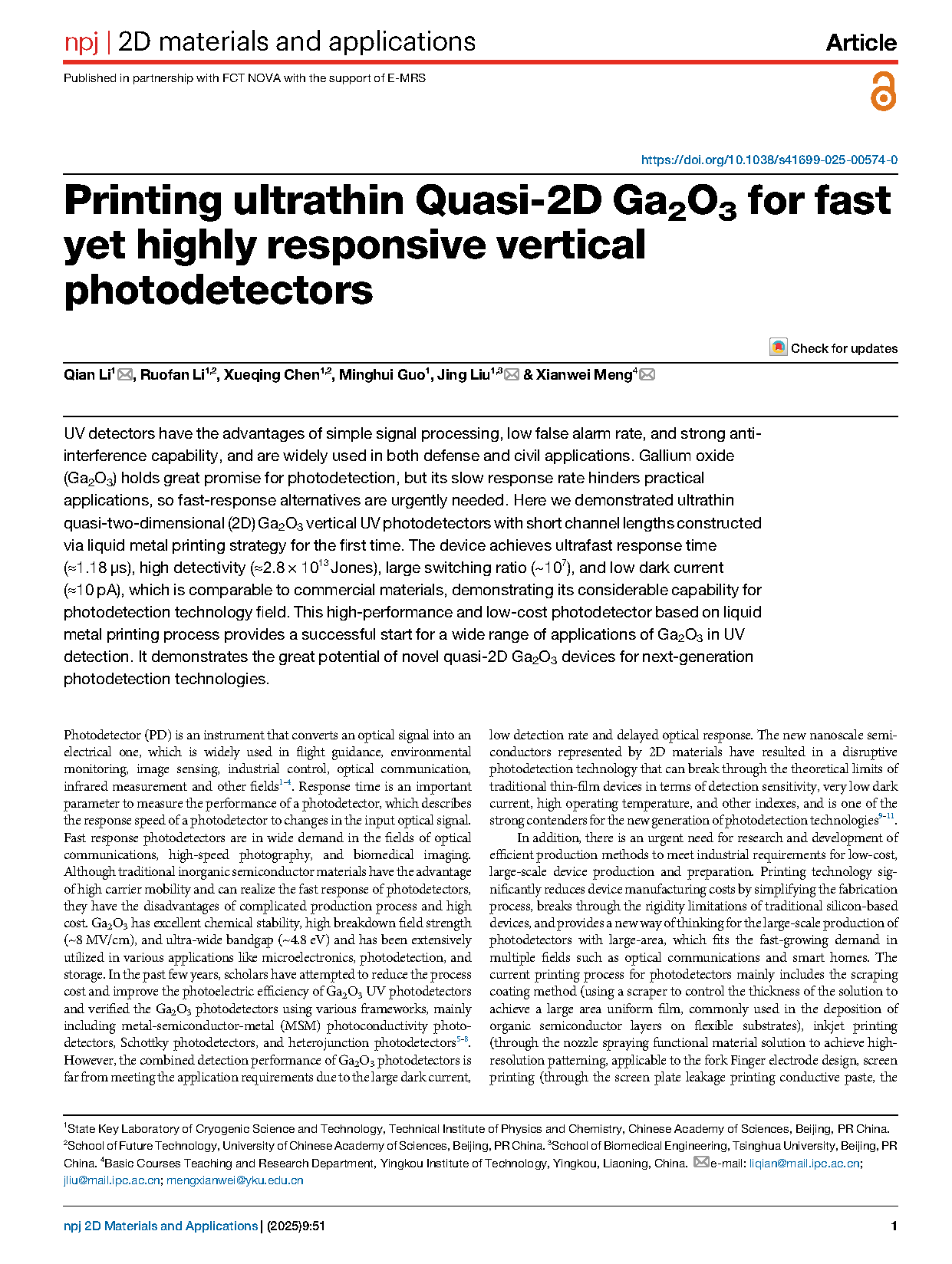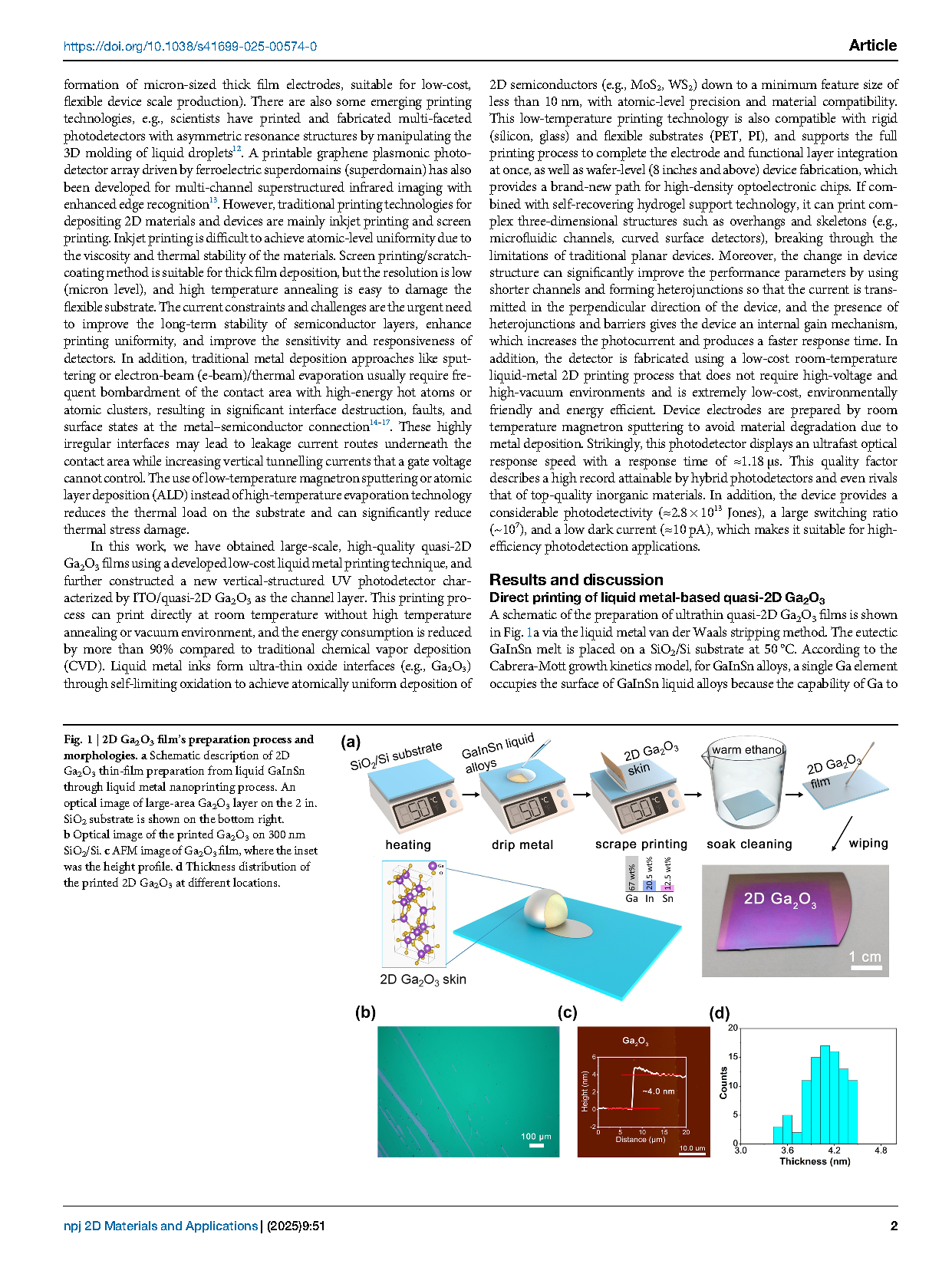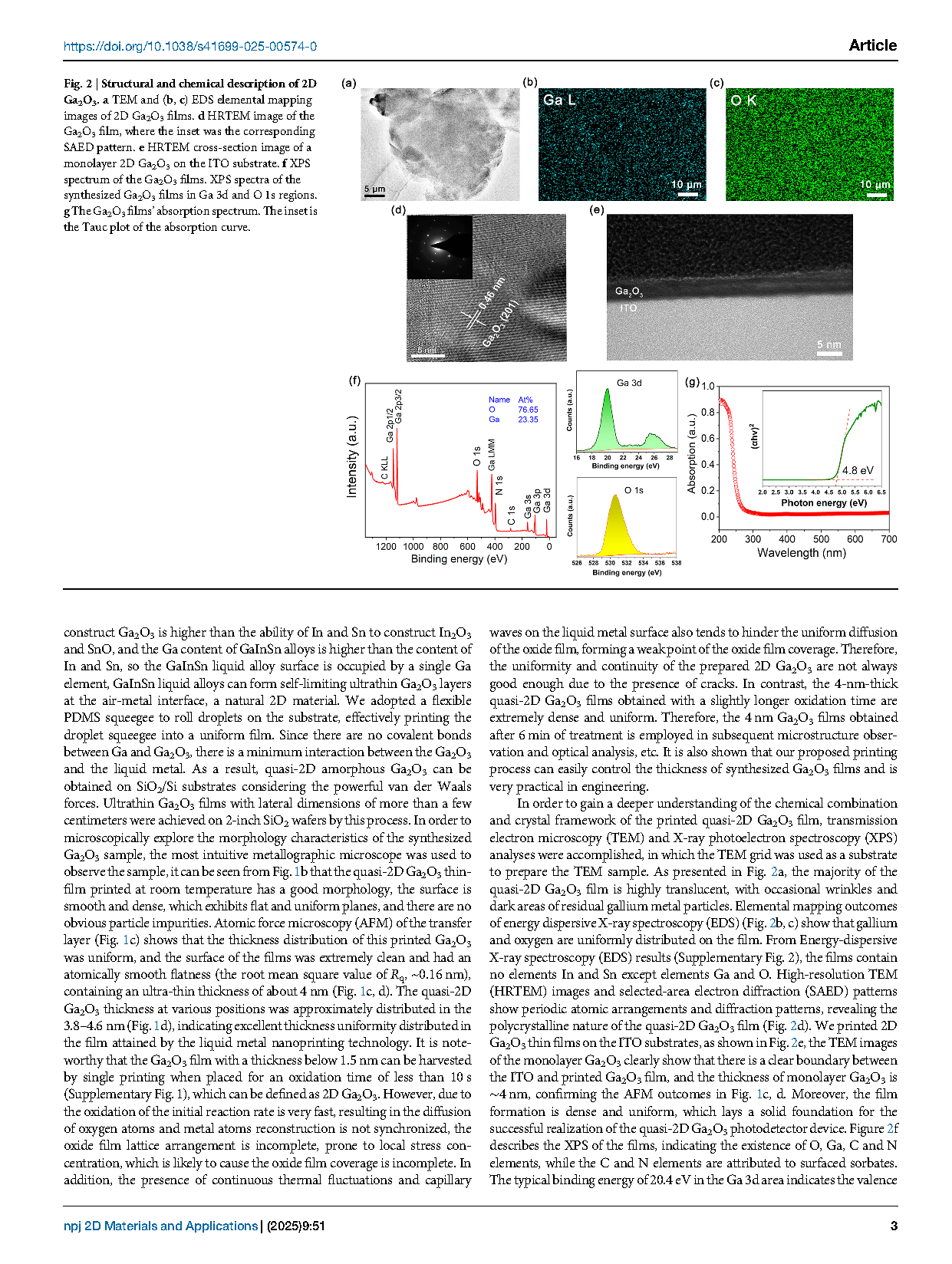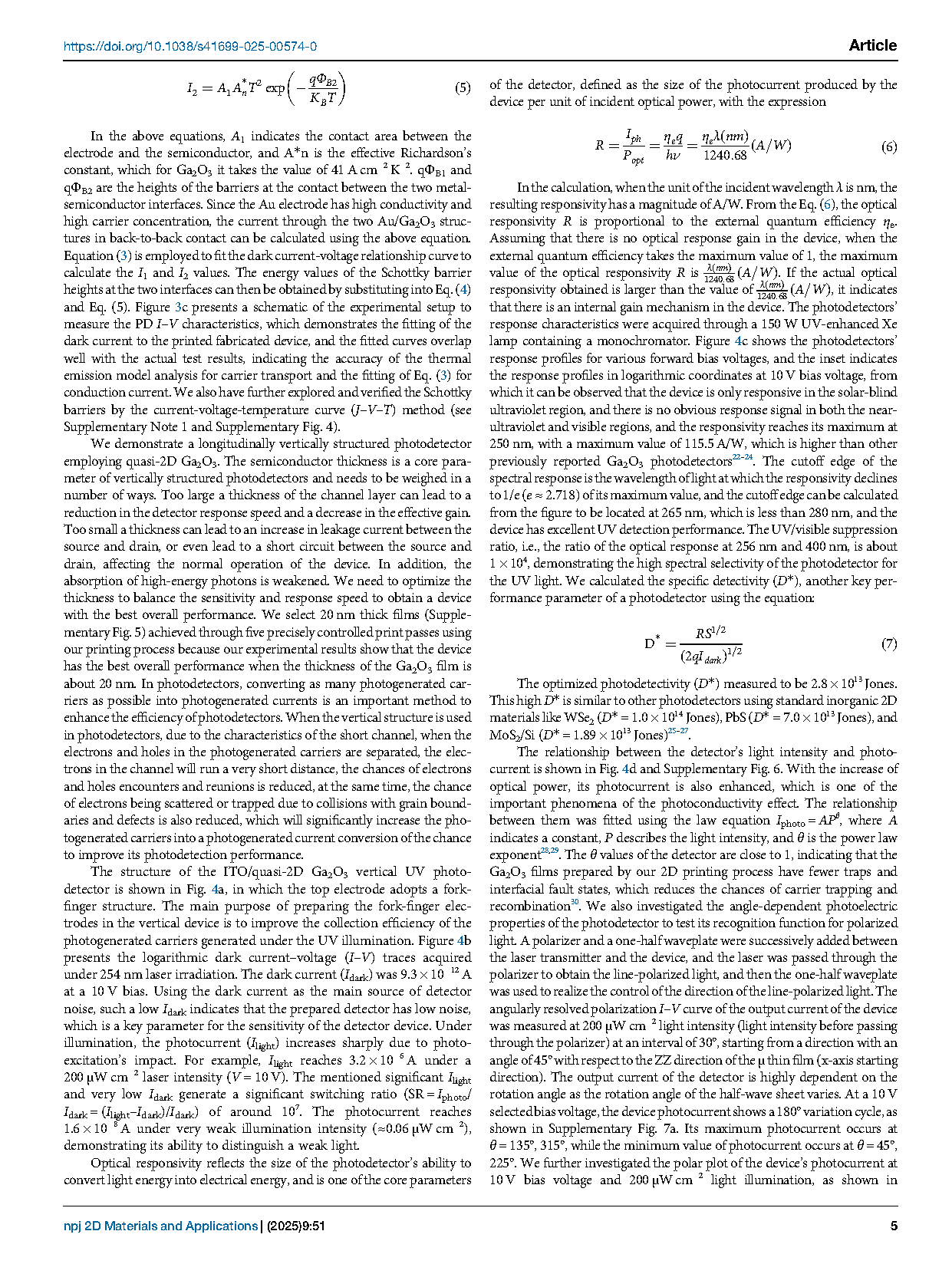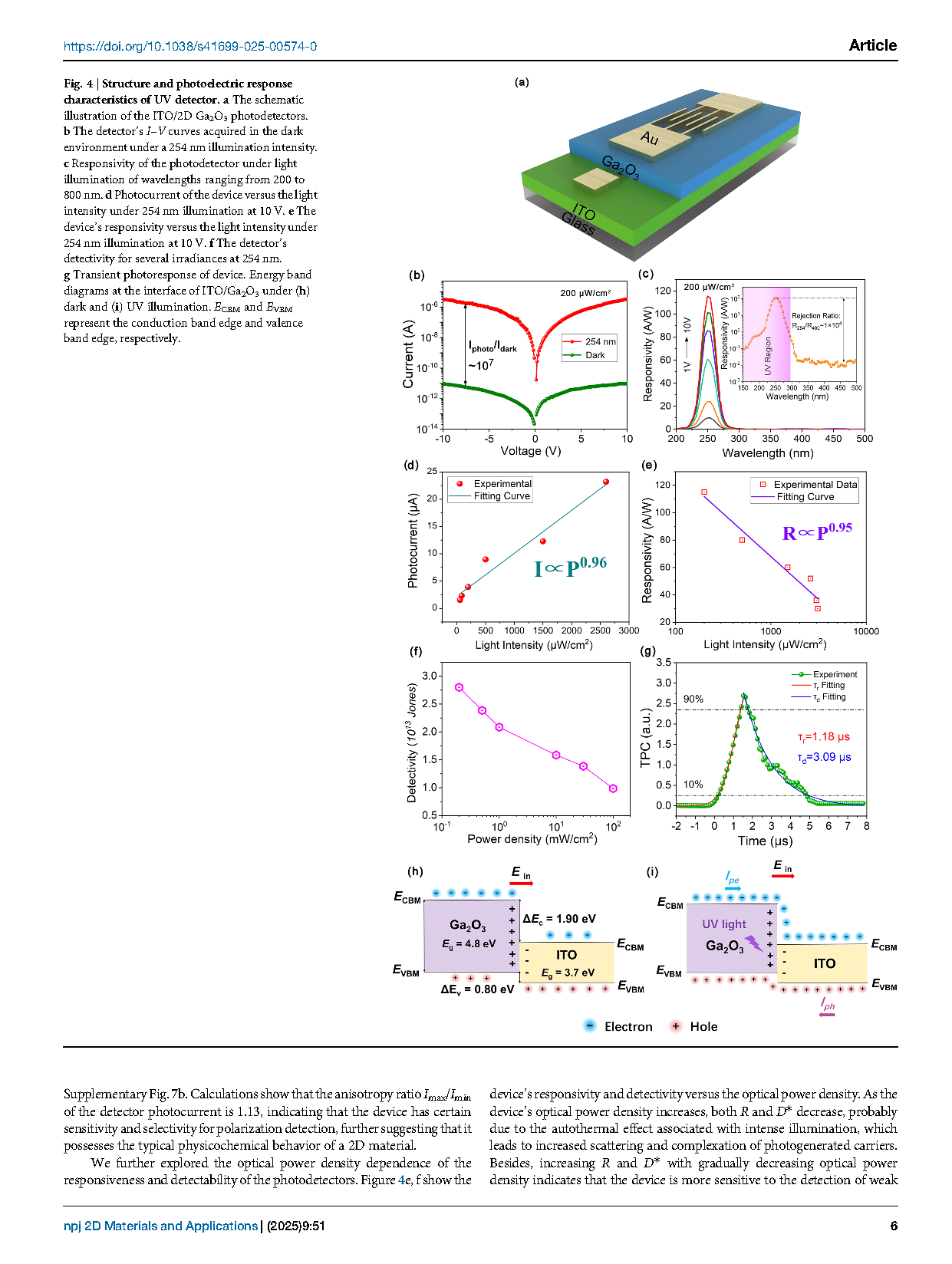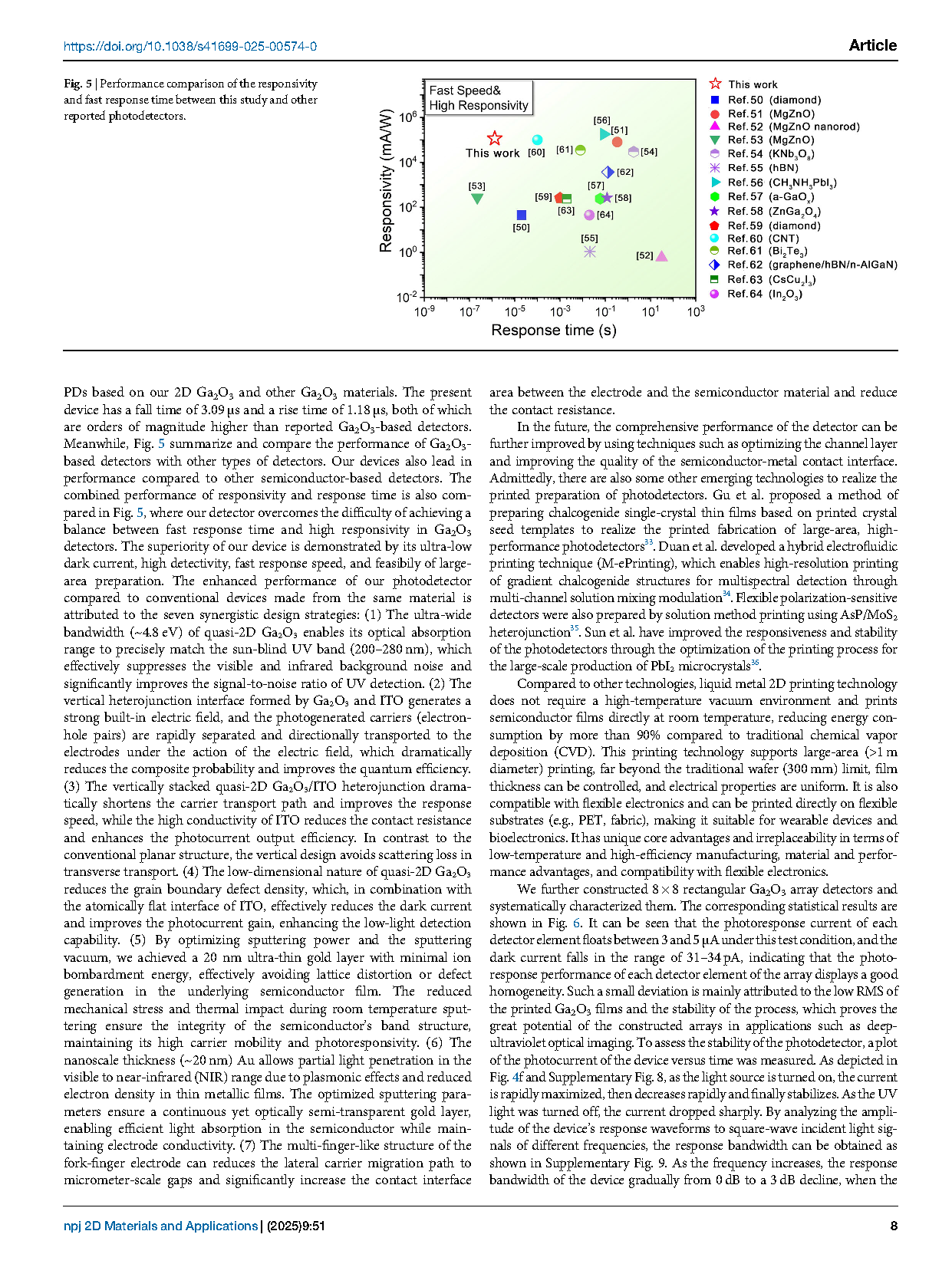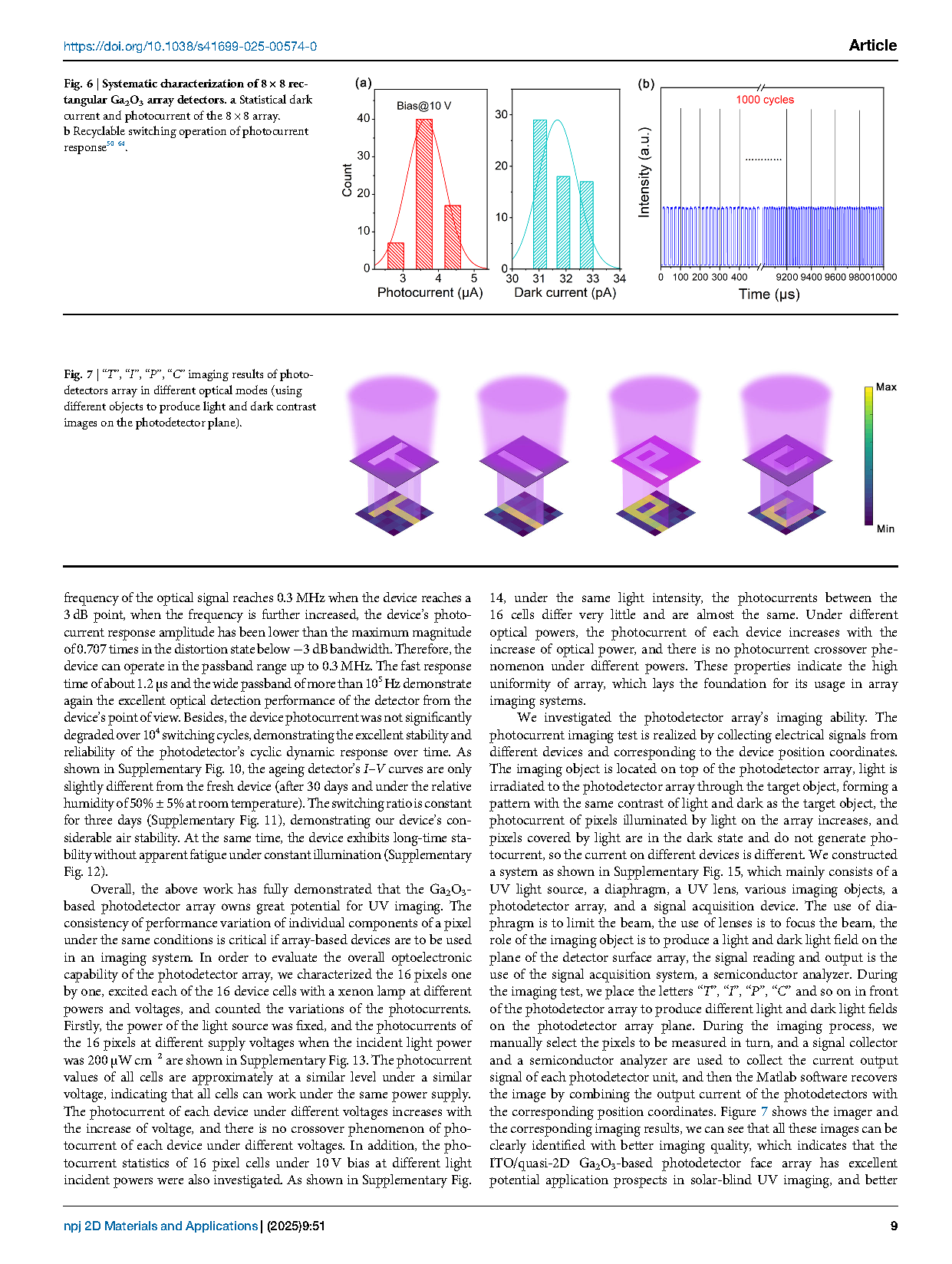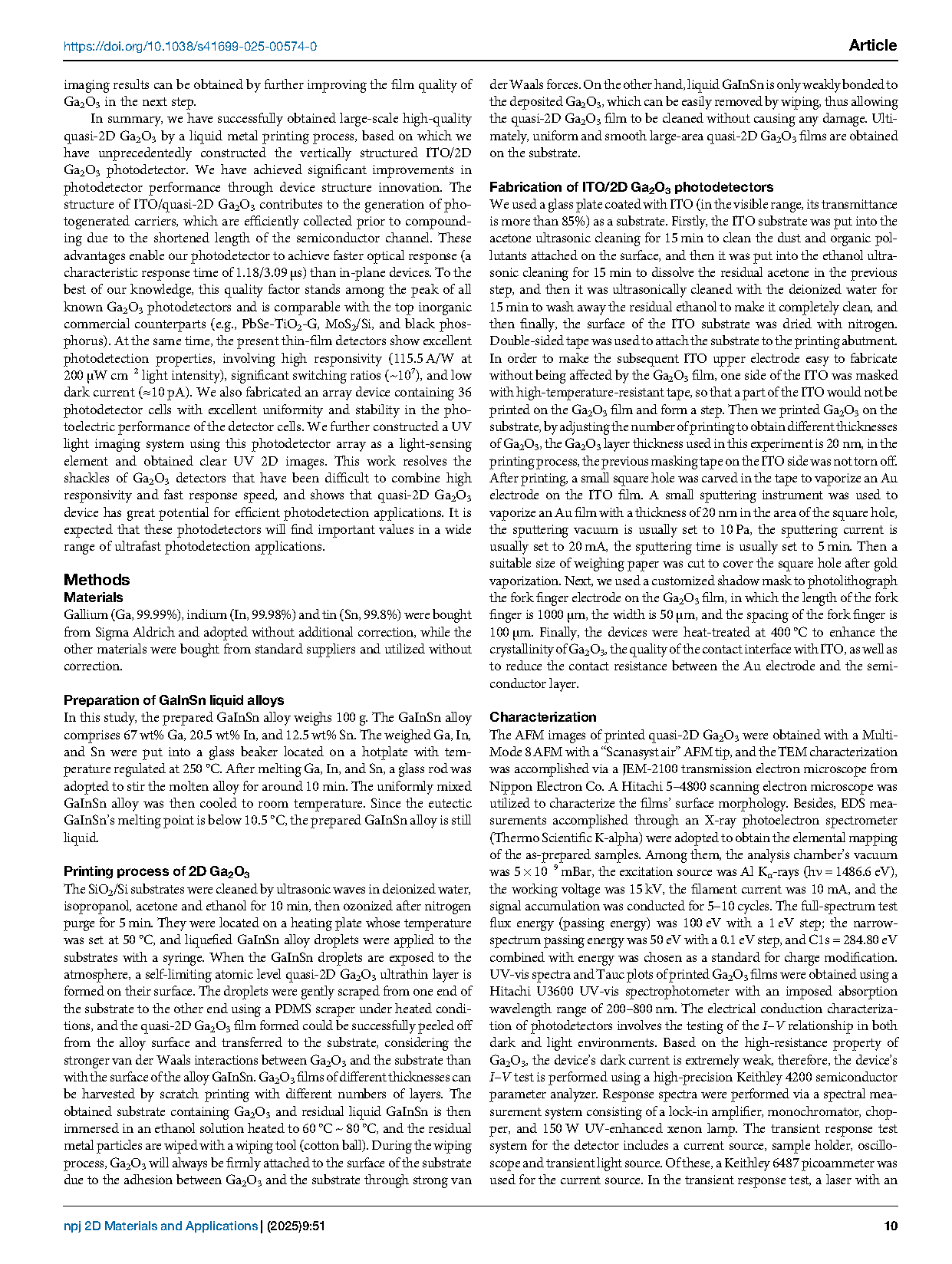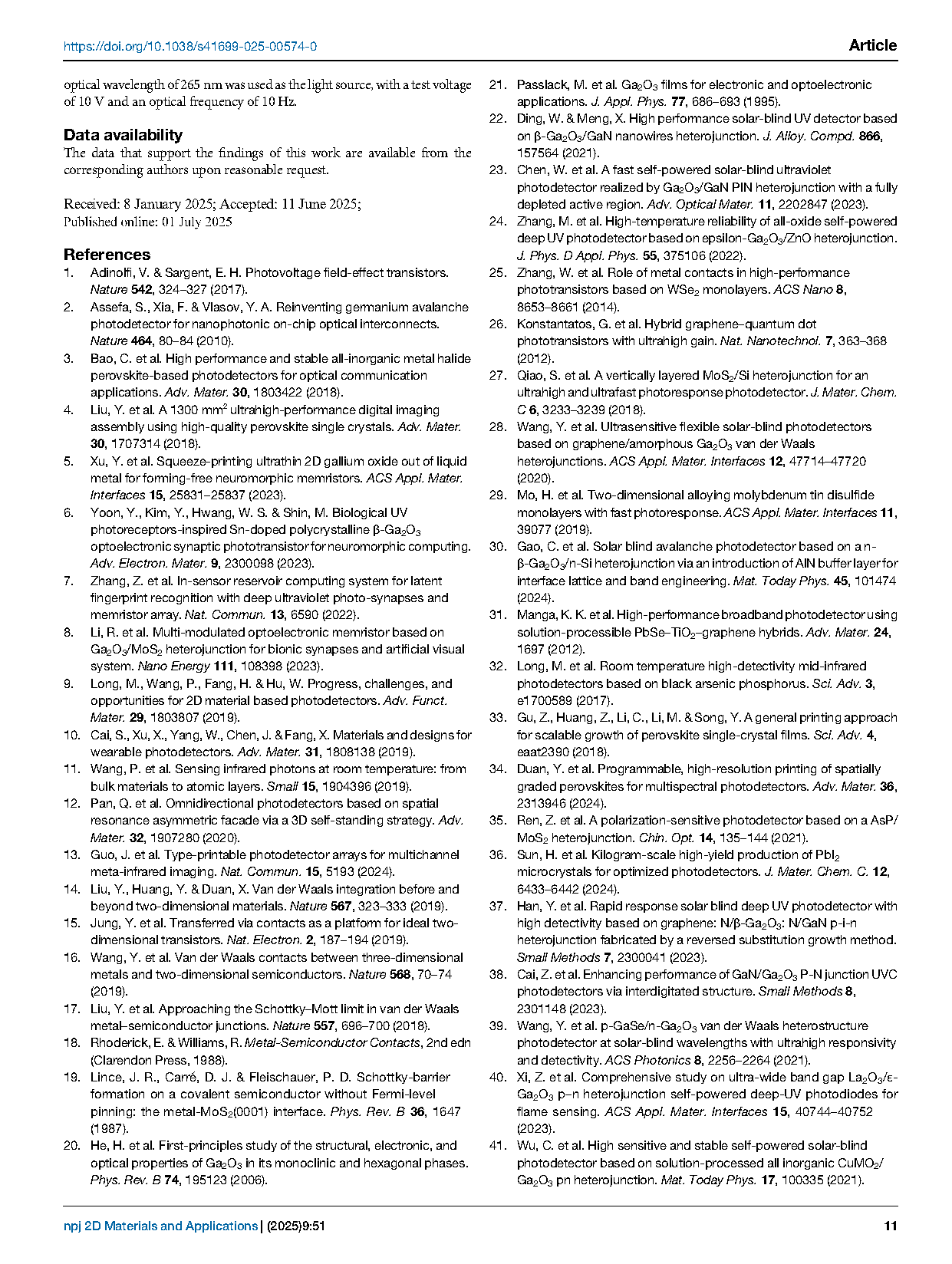

【Domestic Papers】Printing ultrathin Quasi-2D Ga₂O₃ for fast yet highly responsive vertical photodetectors
日期:2025-07-30阅读:260
Researchers from the Chinese Academy of Sciences have published a dissertation titled "Printing ultrathin Quasi-2D Ga2O3 for fast yet highly responsive vertical photodetectors" in npj 2d materials and applications.
Project Support
This work was partially supported by the NSFC Grant (No. 91748206).
Background
Photodetector (PD) is an instrument that converts an optical signal into an electrical one, which is widely used in flight guidance, environmental monitoring, image sensing, industrial control, optical communication, infrared measurement and other fields. Response time is an important parameter to measure the performance of a photodetector, which describes the response speed of a photodetector to changes in the input optical signal. Fast response photodetectors are in wide demand in the fields of optical communications, high-speed photography, and biomedical imaging. Although traditional inorganic semiconductor materials have the advantage of high carrier mobility and can realize the fast response of photodetectors, they have the disadvantages of complicated production process and high cost. Ga2O3 has excellent chemical stability, high breakdown field strength (~8 MV/cm), and ultra-wide bandgap (~4.8 eV) and has been extensively utilized in various applications like microelectronics, photodetection, and storage. In the past few years, scholars have attempted to reduce the process cost and improve the photoelectric efficiency of Ga2O3 UV photodetectors and verified the Ga2O3 photodetectors using various frameworks, mainly including metal-semiconductor-metal (MSM) photoconductivity photodetectors, Schottky photodetectors, and heterojunction photodetectors.
Abstract
UV detectors have the advantages of simple signal processing, low false alarm rate, and strong anti-interference capability, and are widely used in both defense and civil applications. Gallium oxide (Ga2O3) holds great promise for photodetection, but its slow response rate hinders practical applications, so fast-response alternatives are urgently needed. Here we demonstrated ultrathin quasi-two-dimensional (2D) Ga2O3 vertical UV photodetectors with short channel lengths constructed via liquid metal printing strategy for the first time. The device achieves ultrafast response time (≈1.18 μs), high detectivity (≈2.8 × 1013 Jones), large switching ratio (~107), and low dark current (≈10 pA), which is comparable to commercial materials, demonstrating its considerable capability for photodetection technology field. This high-performance and low-cost photodetector based on liquid metal printing process provides a successful start for a wide range of applications of Ga2O3 in UV detection. It demonstrates the great potential of novel quasi-2D Ga2O3 devices for next-generation photodetection technologies.
Summary
We have successfully obtained large-scale high-quality quasi-2D Ga2O3 by a liquid metal printing process, based on which we have unprecedentedly constructed the vertically structured ITO/2D Ga2O3 photodetector. We have achieved significant improvements in photodetector performance through device structure innovation. The structure of ITO/quasi-2D Ga2O3 contributes to the generation of photogenerated carriers, which are efficiently collected prior to compounding due to the shortened length of the semiconductor channel. These advantages enable our photodetector to achieve faster optical response (a characteristic response time of 1.18/3.09 μs) than in-plane devices. To the best of our knowledge, this quality factor stands among the peak of all known Ga2O3 photodetectors and is comparable with the top inorganic commercial counterparts (e.g., PbSe-TiO2-G, MoS2/Si, and black phosphorus). At the same time, the present thin-film detectors show excellent photodetection properties, involving high responsivity (115.5 A/W at 200 μW cm−2 light intensity), significant switching ratios (~107), and low dark current (≈10 pA). We also fabricated an array device containing 36 photodetector cells with excellent uniformity and stability in the photoelectric performance of the detector cells. We further constructed a UV light imaging system using this photodetector array as a light-sensing element and obtained clear UV 2D images. This work resolves the shackles of Ga2O3 detectors that have been difficult to combine high responsivity and fast response speed, and shows that quasi-2D Ga2O3 device has great potential for efficient photodetection applications. It is expected that these photodetectors will find important values in a wide range of ultrafast photodetection applications.
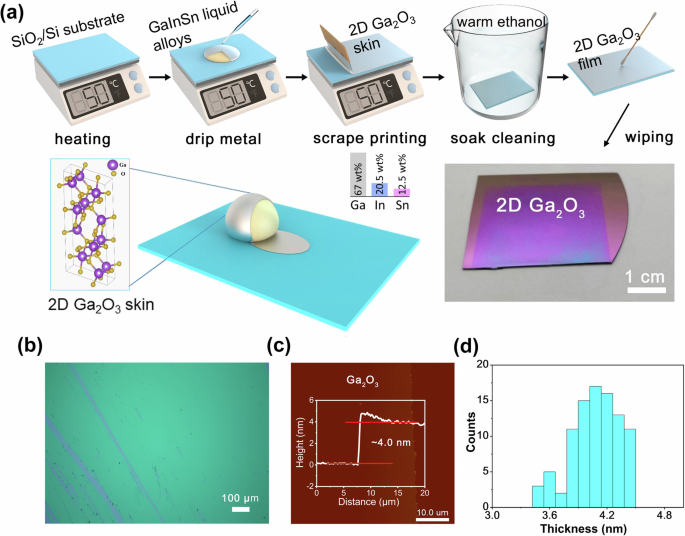
Fig. 1: 2D Ga2O3 film’s preparation process and morphologies.
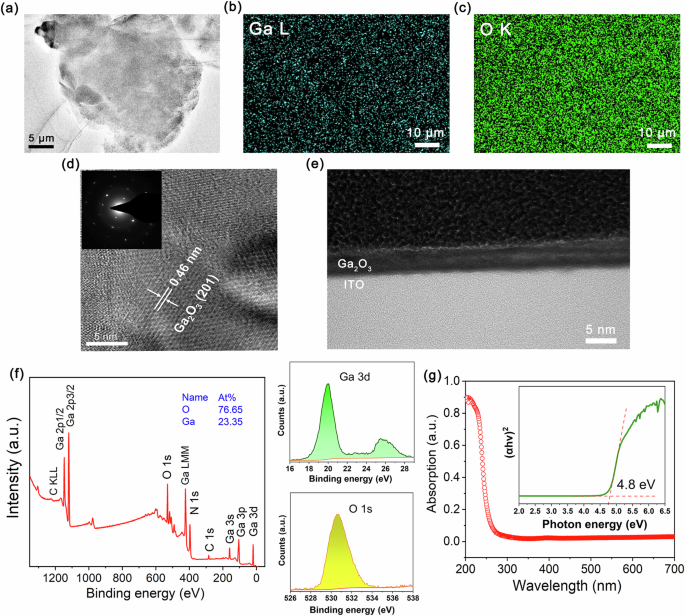
Fig. 2: Structural and chemical description of 2D Ga2O3.
DOI:
doi.org/10.1038/s41699-025-00574-0
